01:45
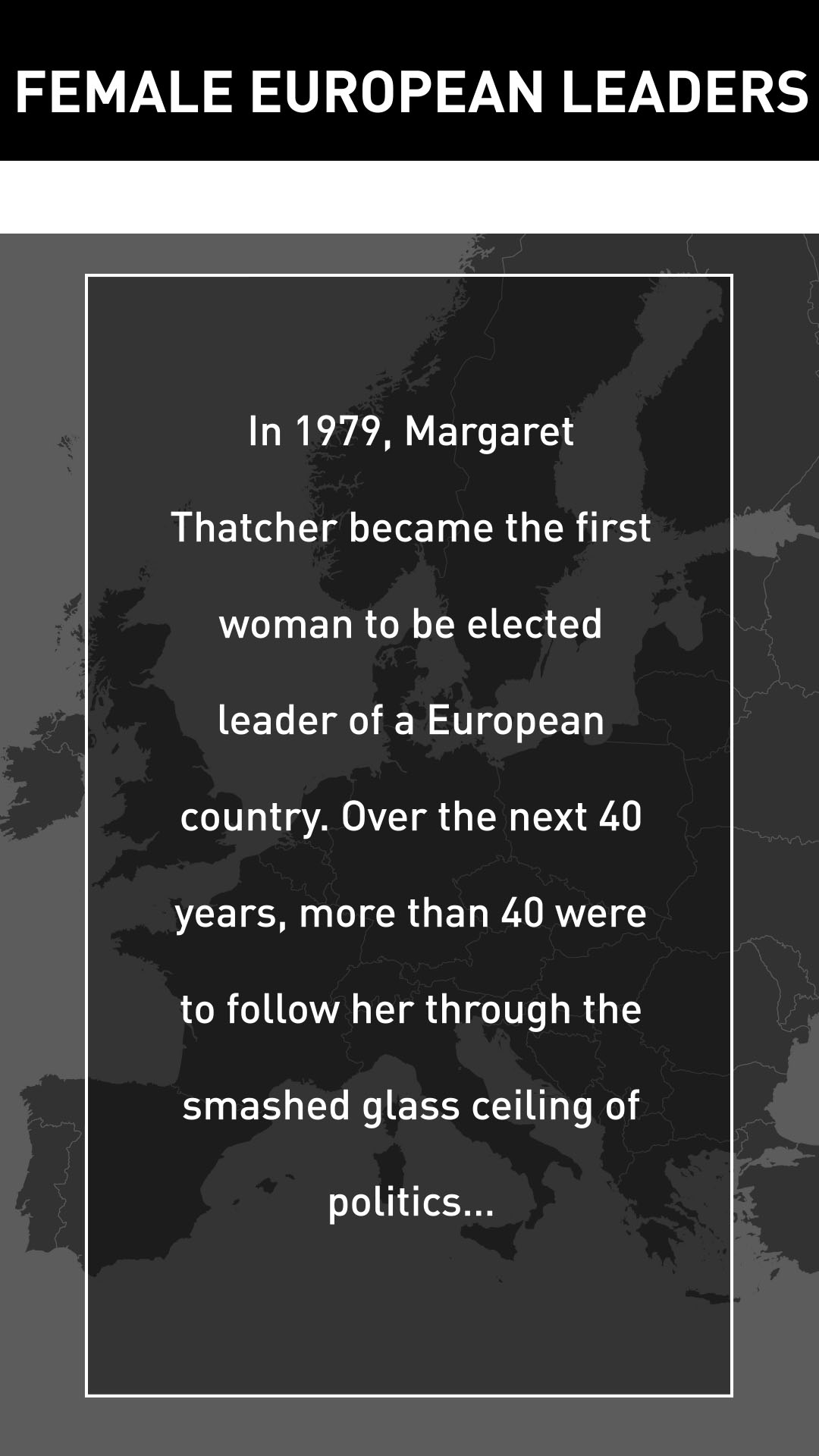
Do you know how many European countries are led by women?
It's currently 15, which is not far off the all-time record – of which more later.
Of that number, nine are prime ministers and thus executive leaders of government, with six presidents that have more ceremonial head-of-state duties. Spanning the continent from Iceland to Serbia, these women are continuing a heritage of female European leaders stretching back to the 1970s.
The trailblazers
On May 4, 1979, the United Kingdom started a revolution by electing Margaret Thatcher as the first female head of a European government. She wasn't the world's first female leader, even in modern times – Sirimavo Bandaranaike was elected in Sri Lanka in 1960, back when it was Ceylon – but Thatcher kick-started an era of much greater female presence at the top of politics.
"Leader" can mean different things, from head of government to head of state with various shades in between. Thatcher came to power under the female head of state Queen Elizabeth II, but the British monarch's position is ceremonial and unelected. Many European countries have presidents as well as prime ministers, sharing their power in different ways and to different extents.
READ MORE
Liz Truss: Profile
What is next for the UK under Truss?
Boris Johnson's leadership reviewed
Within three months of Thatcher's election victory, Maria de Lourdes Pintasilgo became prime minister of Portugal, albeit elected by the president rather than the public. She only lasted three months, but the next female leader stuck around much longer.
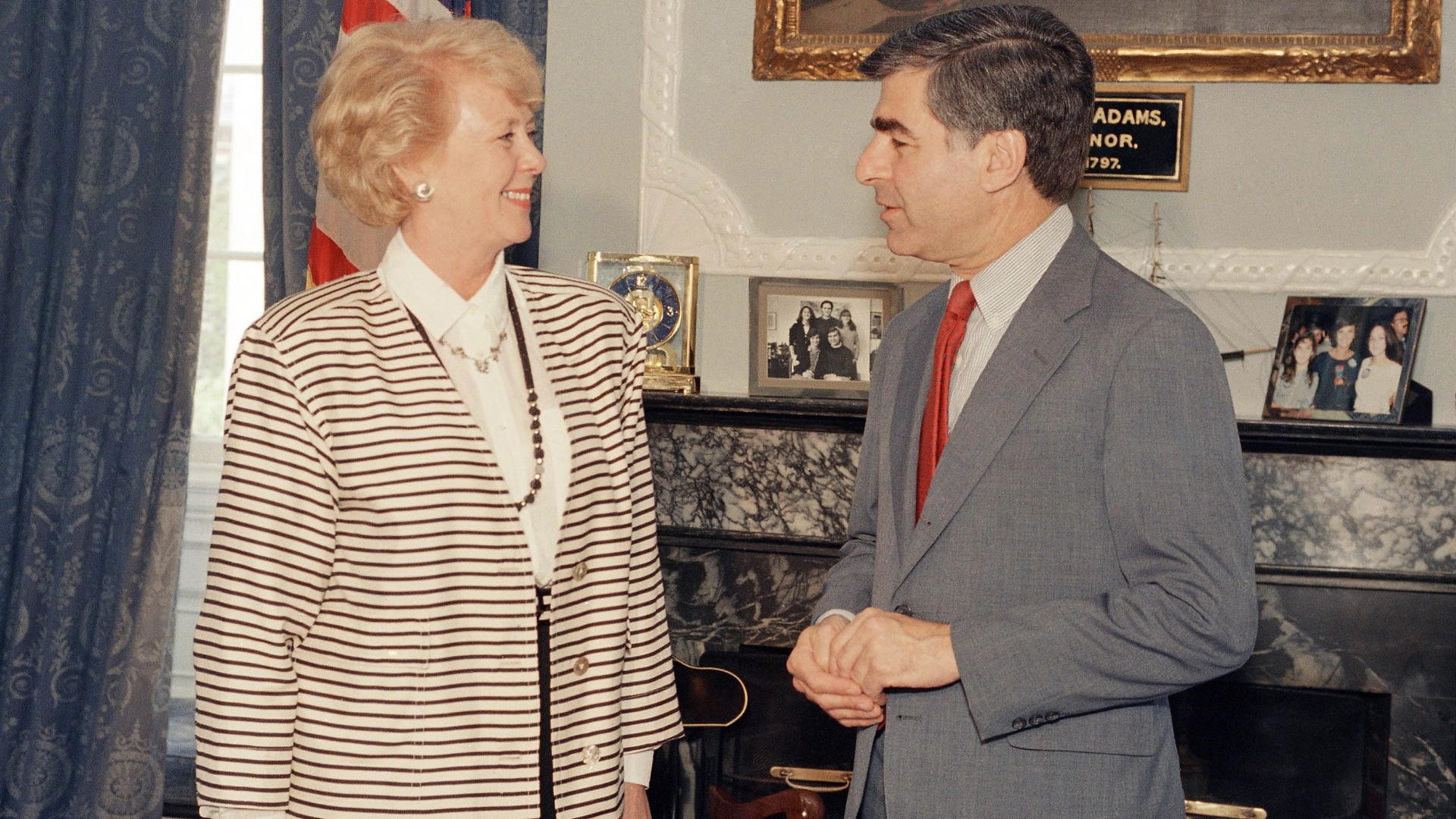
Vigdis Finnbogadottir with U.S. presidential candidate Michael Dukakis in 1988, halfway through her 16-year term. /Susan Walsh/AP Photo
Vigdis Finnbogadottir with U.S. presidential candidate Michael Dukakis in 1988, halfway through her 16-year term. /Susan Walsh/AP Photo
The 1980s
In 1980, Iceland made Vigdis Finnbogadottir the world's first democratically directly elected female president and kept her in the job for 16 years to the day. Finnbogadottir was a pioneer more than just politically: divorced in 1963, she nevertheless became the first Icelandic single woman to be allowed to adopt a child.
Across the North Sea, Gro Harlem Brundtland became Norway's prime minister in 1981, then again in 1986, then once more in 1990. Eight of her 18 cabinet members in the second of those terms were female. By that point, Milka Planinc was prime minister of Yugoslavia, remaining in the post from 1982 to 1986.
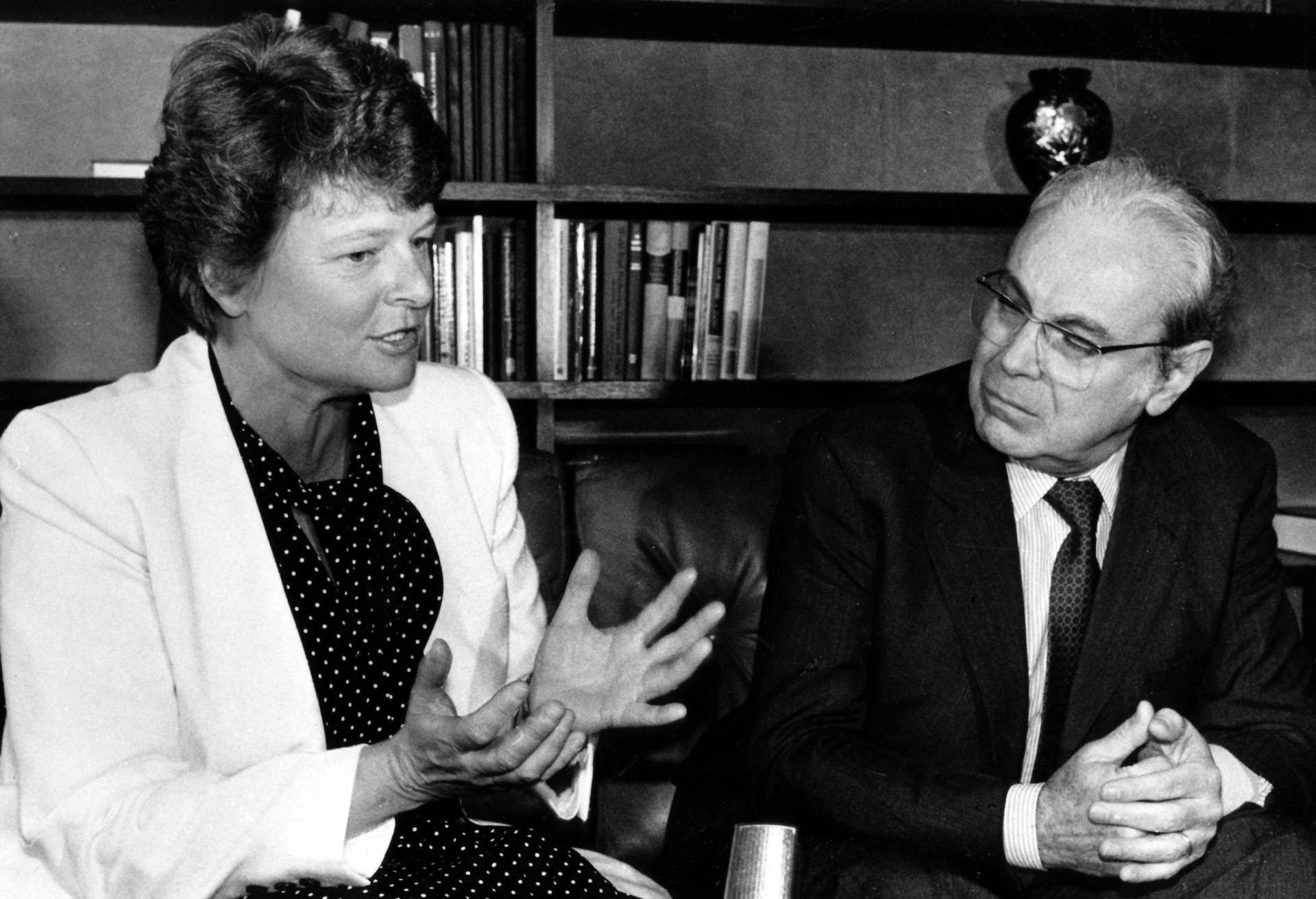
Norwegian leader Gro Harlem Brundtland with UN Secretary-General Javier Perez De Cuellar in 1986, early in her second term of three. /Massimo Sambucetti/AP Photo
Norwegian leader Gro Harlem Brundtland with UN Secretary-General Javier Perez De Cuellar in 1986, early in her second term of three. /Massimo Sambucetti/AP Photo
The 1990s
In March 1990, newly independent Lithuania chose Kazimira Prunskiene as its first prime minister. A month later, Sabine Bergmann-Pohl became East Germany's final head of state. There was just time for Norway to elect Brundtland again before 1990 delivered one last female leader.
For some in Ireland, the country's social history can be sharply divided into the time before and after Mary Robinson's presidency. A Catholic married to a Protestant, this Harvard-trained lawyer had campaigned for women's rights since the 1960s and brought a popular progressiveness to Irish politics. During her tenure, contraceptives were made fully available and homosexuality fully decriminalized, while she ignored reactionary advice by meeting with the Pope, not to mention Sinn Fein and the UK's royal family.
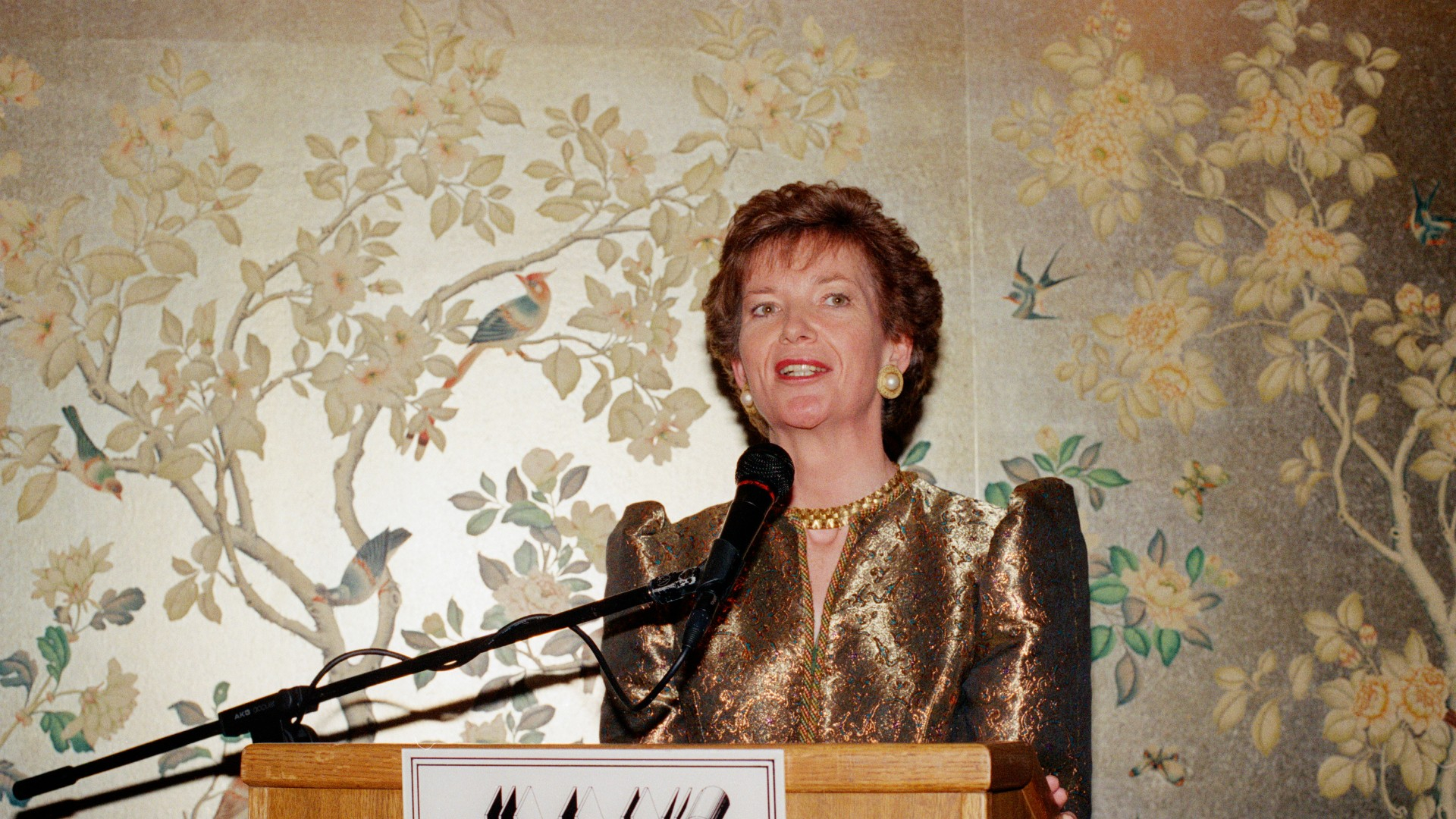
Ireland's president Mary Robinson speaking in 1991. /Reed Saxon/AP Photo
Ireland's president Mary Robinson speaking in 1991. /Reed Saxon/AP Photo
In 1991, the French president Francois Mitterrand nominated Edith Cresson as his prime minister. Her image damaged by various quotes seen as homophobic and racist (her effigy was burned in Tokyo), she lasted less than a year and remained France's only female head of state or government until Elisabeth Borne became prime minister in May 2022.
The same can't be said of Poland, where in 1992 Hanna Suchocka became the first of three female prime ministers so far – in her case, balancing a fractious ruling coalition in a seven-party parliament.
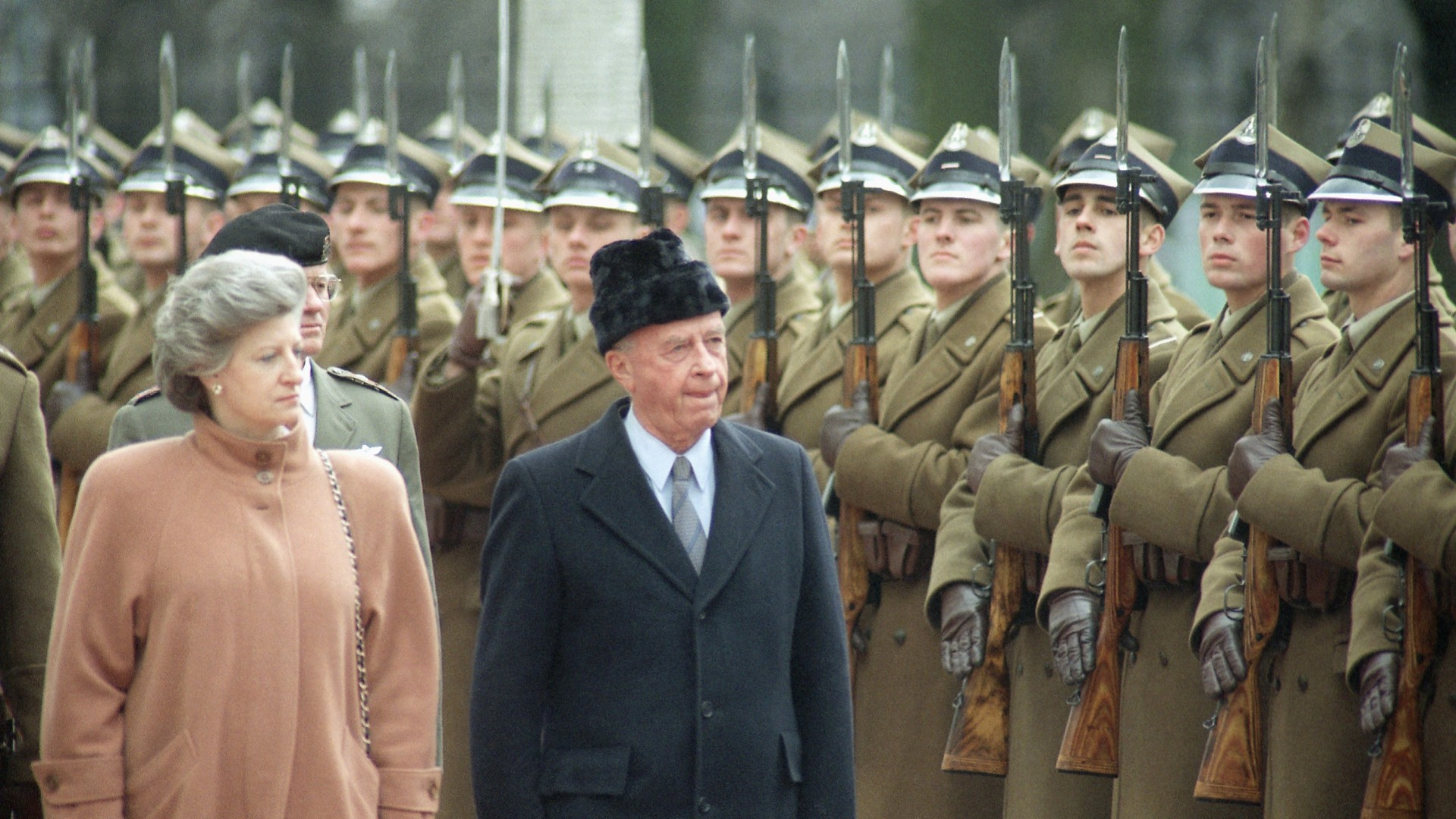
Polish PM Hanna Suchocka welcomes Israel's Yitzhak Rabin in 1993 to mark the 50th anniversary of the Warsaw Ghetto Uprising. /Alik KepliczAP Photo
Polish PM Hanna Suchocka welcomes Israel's Yitzhak Rabin in 1993 to mark the 50th anniversary of the Warsaw Ghetto Uprising. /Alik KepliczAP Photo
After five new female leaders in the first three years of the 1990s, the pace dropped off again. In 1997, Ireland voted Mary McAleese to replace Mary Robinson; the second Mary lasted a day short of 14 years, meaning Ireland had female presidents for almost 21 years. Born in Northern Ireland, she helped build bridges between religious communities and between Ireland and the British.
In 1999, Latvia's parliament, the Saeima, elected its first female president, Vaira Vike-Freiberga, who had previously spent 33 years as a professor of psychology at the University of Montreal. Almost universally popular, she remained in the post for the state-imposed maximum of eight years.
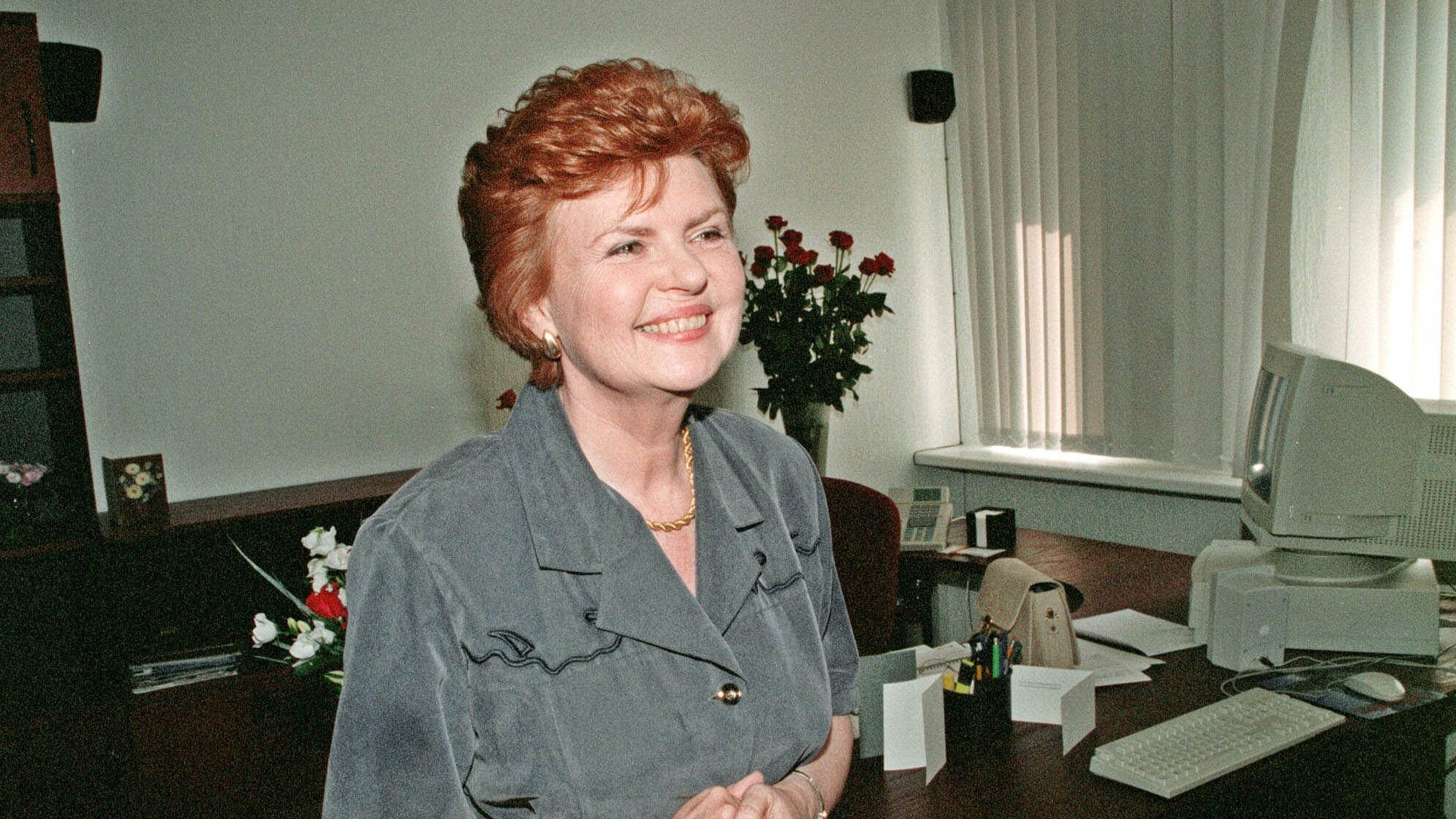
Vaira Vike-Freiberga in 1999, beginning eight years as Latvia's president. /Boris Kolesnikov/AFI/AP Photo
Vaira Vike-Freiberga in 1999, beginning eight years as Latvia's president. /Boris Kolesnikov/AFI/AP Photo
The 2000s
After Poland, Lithuania and Latvia, the next Baltic Sea-bordering nation to elect a female leader was Finland, with Tarja Halonen elected by popular mandate in 2000 (and narrowly re-elected in 2006). In 2003, Finland also voted in its first female prime minister, Anneli Jaatteenmaki, although she only lasted two months before resigning over allegations of leaking secret state information for political gain. She was investigated by police but later acquitted.
The same can't be said of Europe's next female leader. Having helped lead Ukraine's Orange Revolution, Yulia Tymoshenko became the country's prime minister from January to September 2005 and again from December 2007 to March 2010 – but then spent three years in jail from 2011 over a gas-importing contract; she was released after the 2014 Euromaidan Revolution.
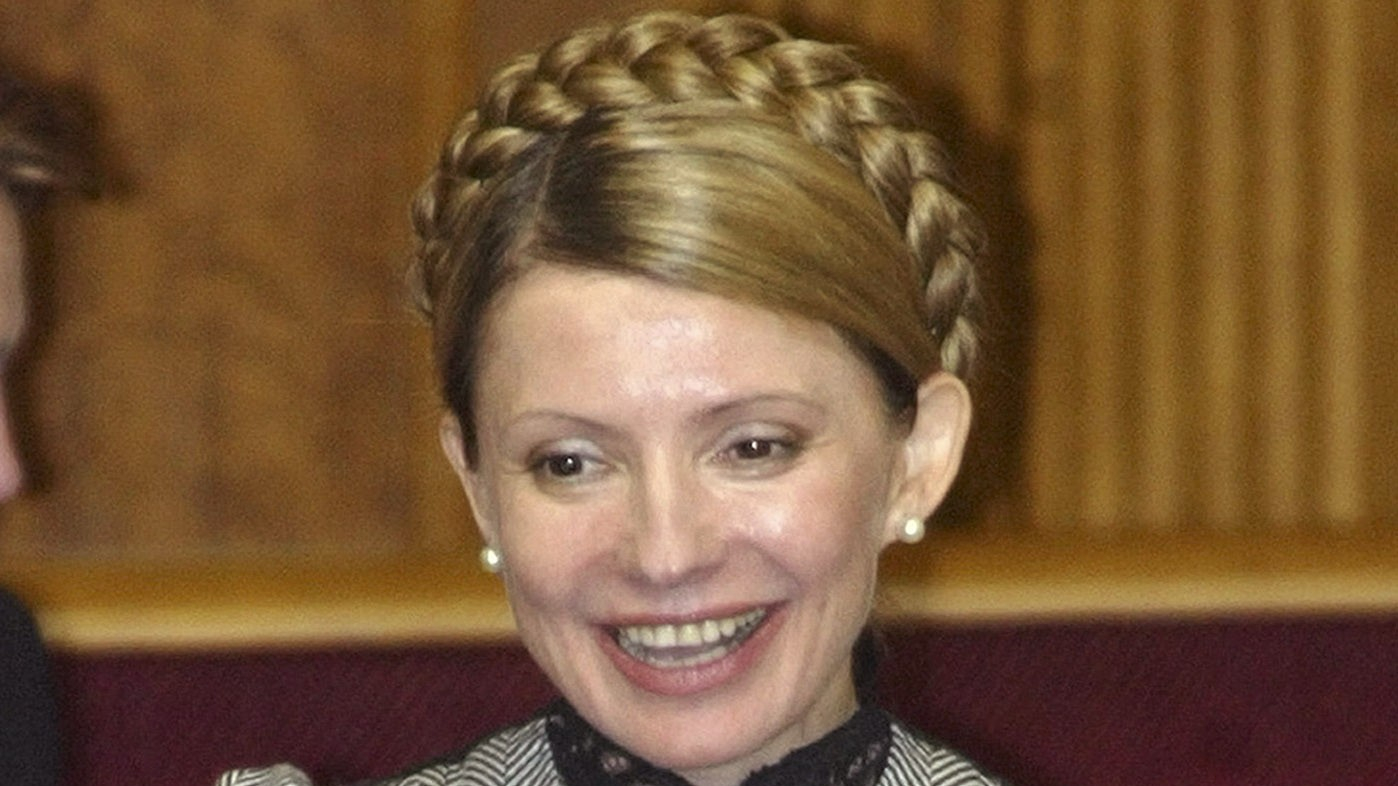
Yulia Tymoshenko becomes Ukrainian PM in 2005. /Sergei Grits/AP Photo
Yulia Tymoshenko becomes Ukrainian PM in 2005. /Sergei Grits/AP Photo
The path was rather smoother for Angela Merkel, the former research scientist with a doctorate in quantum chemistry who became Germany's chancellor in November 2005. Often described as the most powerful woman in the world, she stepped down in December 2021, just about outlasting Icelandic president Vigdis Finnbogadottir's 16-year term to set a record for a female European leader.
Merkel presumably sent messages of congratulations to the groundbreaking women who followed her. Zinaida Greceanii became Moldova's prime minister in 2008; she lasted a year but the country returned another female leader in Maia Sandu – prime minister in 2019 and president from 2020 to date.
Having led the way by electing a long-term female president in Finnbogadottir, Iceland did the double in February 2009: Johanna Sigurdardottir was not only the country's first female prime minister, but also the world's first openly LGBT head of government. Later the same year, Jadranka Kosor became Croatia's first female PM – although Milka Planinc, who had led Yugoslavia in the mid-1980s, was from what is now Croatia.
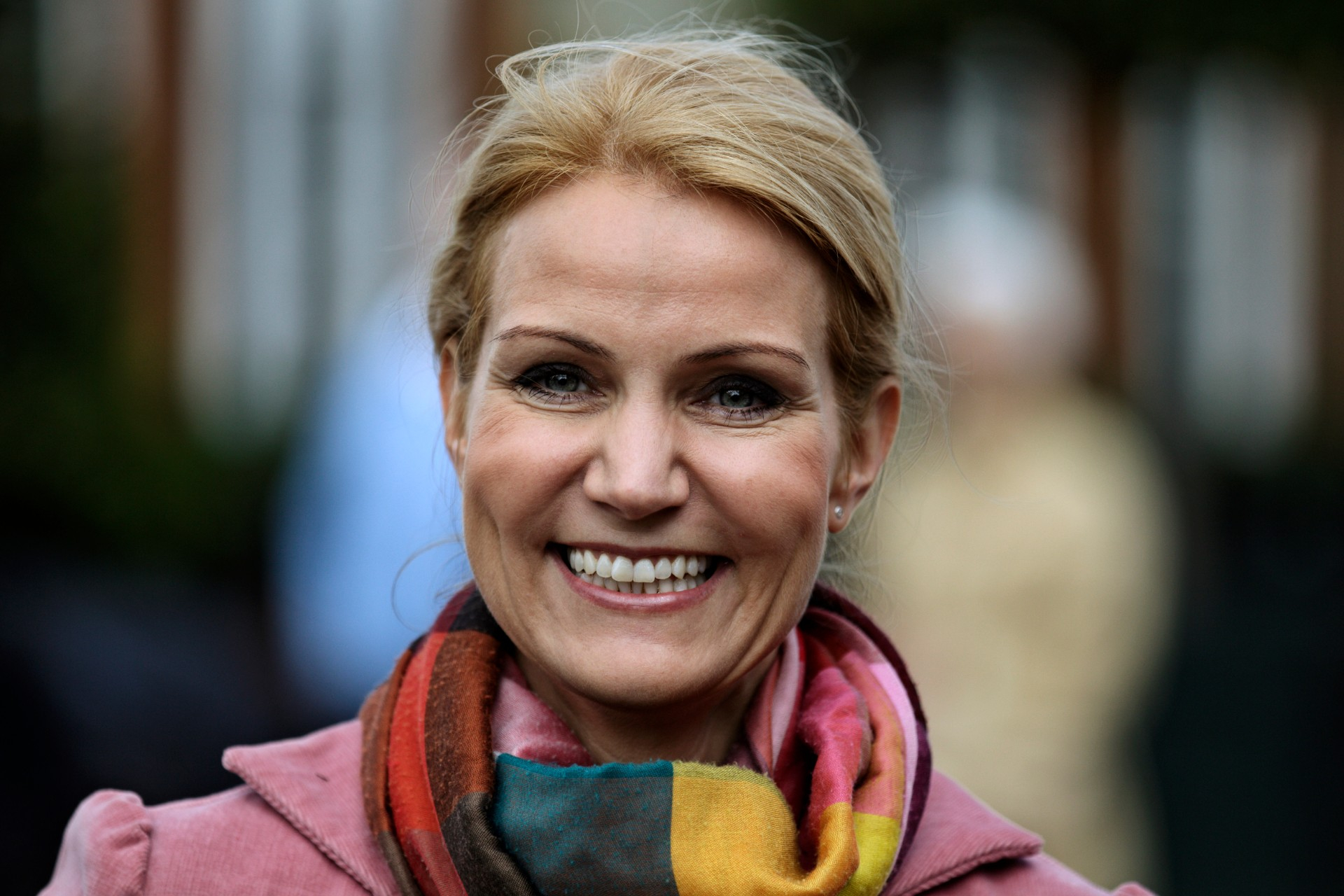
Helle Thorning-Schmidt was Denmark's first female PM, but not the last. /Polfoto, Jens Dresling/AP Photo
Helle Thorning-Schmidt was Denmark's first female PM, but not the last. /Polfoto, Jens Dresling/AP Photo
The 2010s
In 2010, Iveta Radicova became Slovakia's first female PM; after the most popular party failed to form a government, she headed a fragile coalition for a year before losing a vote of confidence in a sharply divided parliament.
Having become the first female leader of Denmark's Social Democrats in 2005, Helle Thorning-Schmidt became the country's first female PM in 2011 – replacing a run of three successive men called Rasmussen, none of whom were related to one another. Thorning-Schmidt's party won the most votes at the 2015 election but was defeated by a center-right coalition; she stood down as party leader, and in June 2019 her replacement Mette Frederiksen became Denmark's second female PM.
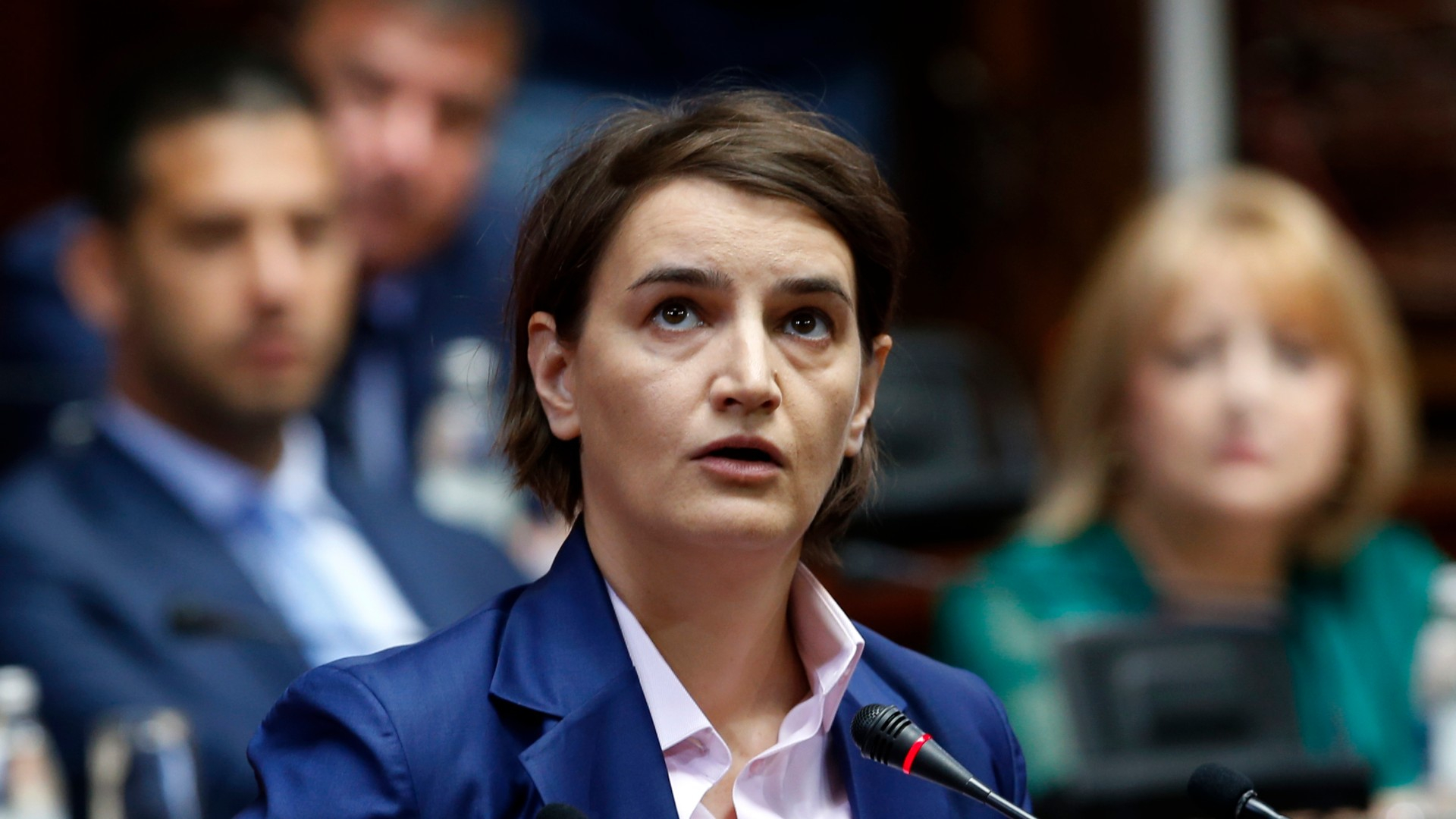
Ana Brnabic is Serbia's first female PM and its first openly gay leader. /Darko Vojinovic/AP Photo
Ana Brnabic is Serbia's first female PM and its first openly gay leader. /Darko Vojinovic/AP Photo
Slovenia was the next country to welcome its first female leader, Alenka Bratusek, in March 2013 – but perhaps "welcome" isn't the right word, as the reaction to her arrival typifies the trouble women can still face: one right-wing political commentator expected her government to last "as long as her skirt's length" – in which case, her skirt was 13 months long.
The decade saw several European countries anoint their second or third female leader: Norway, Latvia, Malta, Croatia, the UK, Iceland and Poland. First-timers include Estonia (president Kersti Kaljulaid), Romania (PM Viorica Dancila) and Georgia (president Salome Zourabichvili) and Serbia, whose PM Ana Brnabic also happens to be gay.
The good news is that the pace of female appointment appears to be accelerating. Six new female leaders were elected in 2019, more than any other year. They were, for the record, Austria's first female chancellor Brigitte Bierlein, Moldova's PM Maia Sandu, Slovakia's president Zuzana Caputova, Denmark's PM Mette Frederiksen, Belgium's first female prime minister Sophie Wilmes and Finland's PM Sanna Marin.
The 2020s
As in so many spheres, things went on hold a little in 2020, with three new female leaders. Katerina Sakellaropoulou broke new ground as president of Greece, Ingrida Simonyte became the new prime minister of Lithuania, and in December Maia Sandu – the year after being Moldova's second female prime minister – became its first female president.
In 2021, Moldova did the double by electing a female prime minister, Natalia Gavralita – one of three female executives elected that year, along with Estonia's Kaja Kallas and Magdalena Andersson of Sweden, further bolstering a Scandinavian and Baltic group of female executives: now the prime ministers of Iceland, Sweden, Denmark, Finland, Lithuania and Estonia were all female, while notable absence Norway can hardly be castigated after a history of female leaders stretching from Gro Harlem Brundtland in 1981 to Erna Solberg in 2021.
During 2022, Hungary (President Katalin Novak) and Italy (PM Giorgia Meloni) got their first female leaders, with France, the UK and Slovenia all returning more women. And for a short while in early 2023, before Gavralita's resignation, Borjana Kristo became Europe's 16th female leader as the head of government in Bosnia and Herzegovina.
At the time of publication (March 8, 2023), Kristo is the latest name on a list of 54 women elected in 33 different countries. There are now 15 incumbent female leaders in Europe, but one could argue it's still not nearly enough. Depending on your definition of geography and sovereignty, Europe has somewhere between 40 and 50 nations; in addition to a head of government, something slightly less than half of these have a functioning elected head of state. Whether the number of political chief positions to aspire to is around 60 or closer to 75, certainly 15 does not represent an equal share for an entire gender or sex.
Even so, 15 women is significantly more than the single female leader of Margaret Thatcher's era, even if the "Iron Lady" operated in a time of a less fractured Europe. By any argument, the distribution of political leadership by gender is quantitatively more equal, and it will be interesting to see if that arc continues to bend toward parity.
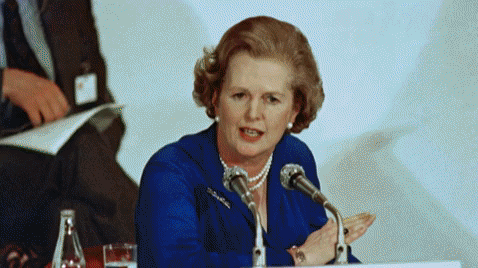
Forty years of female leaders in Europe. /AP, AFP
Forty years of female leaders in Europe. /AP, AFP